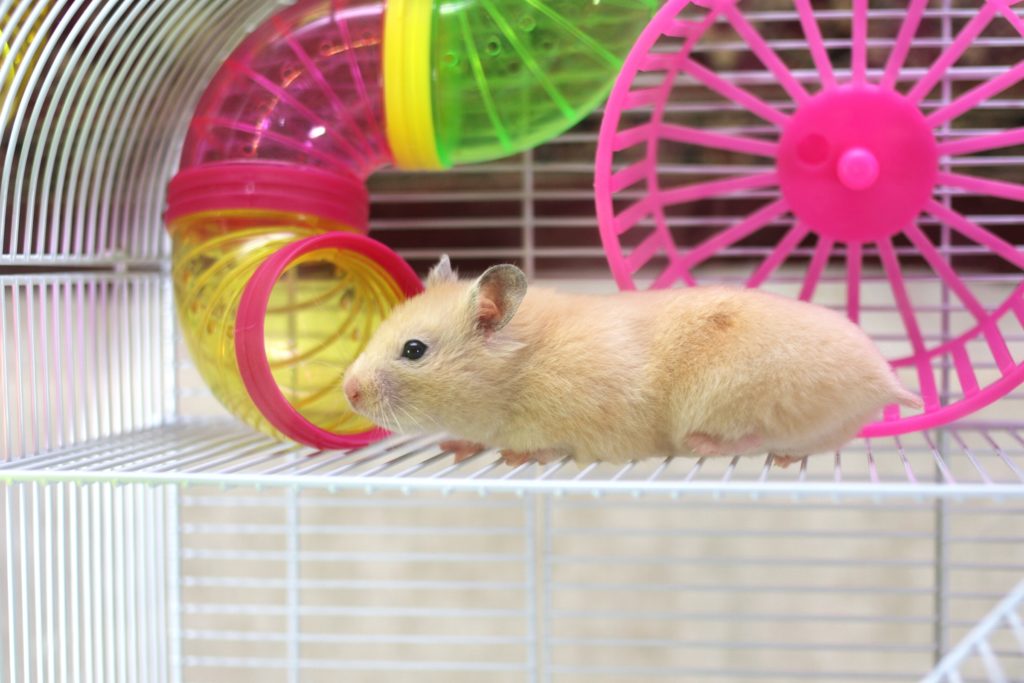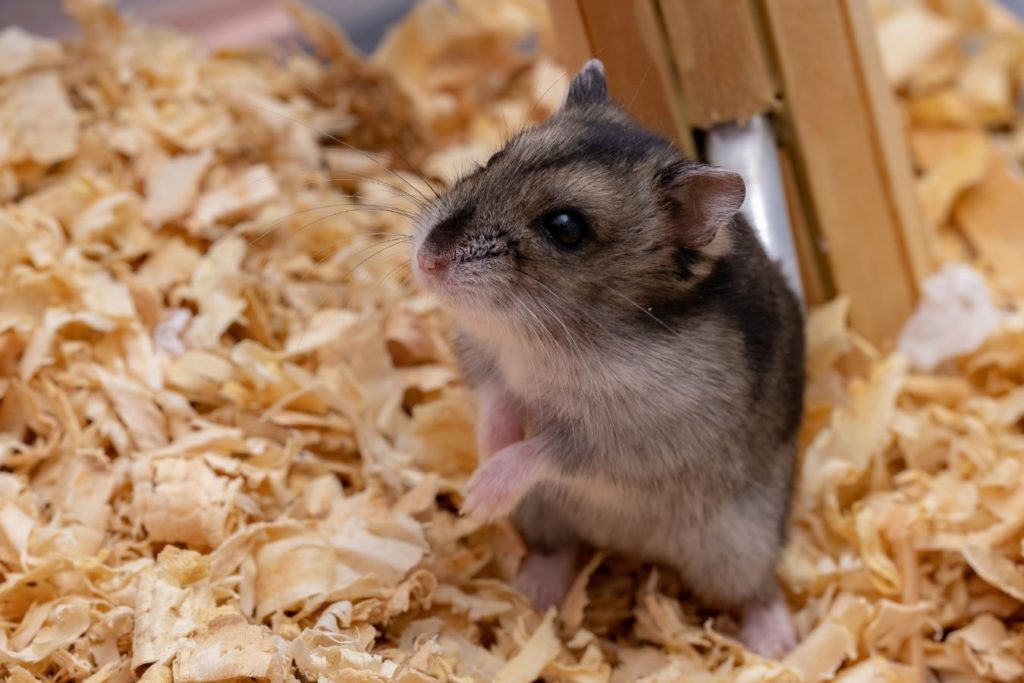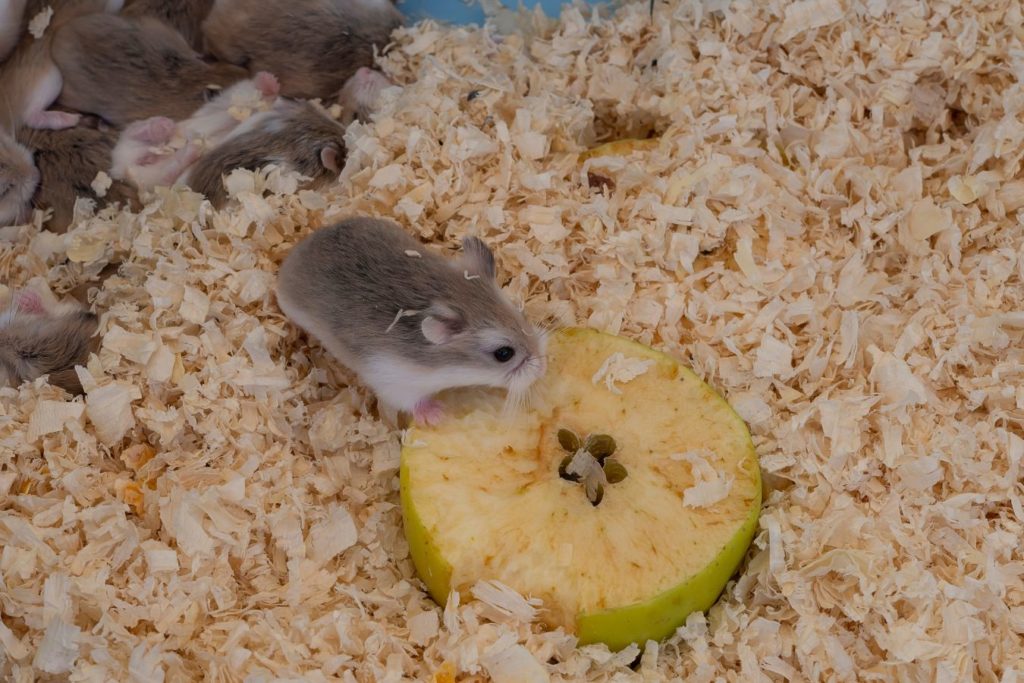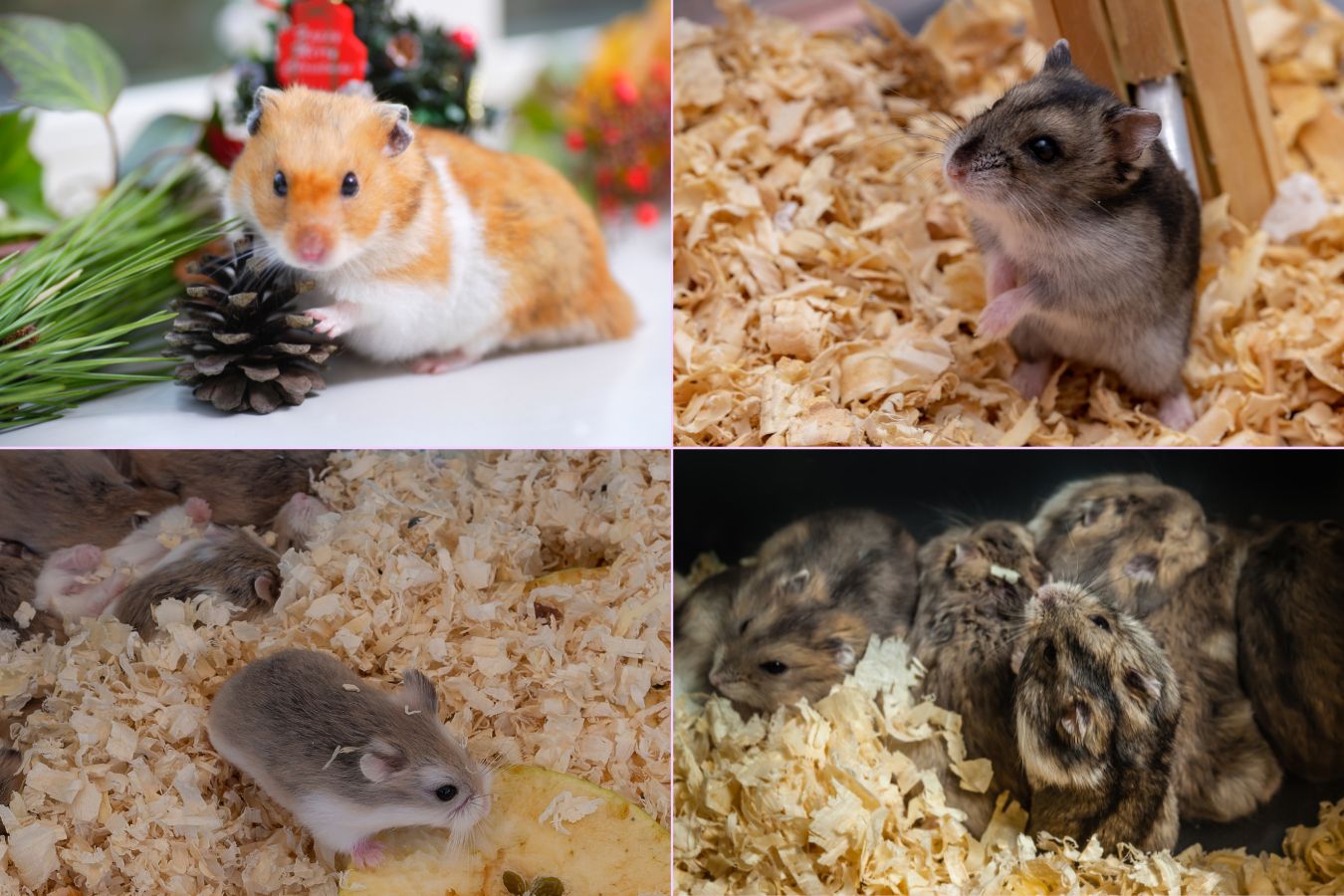Types of Hamster Breeds and Differences in Care
Hamsters make wonderful little pets for those who don’t have much time or space for a larger furry friend.
These little creatures are full of love and are highly entertaining to watch as they explore their cage throughout the day. But did you know that not all hamsters are the same?
In fact, there are many different breeds of hamsters out there. Each breed of hamster has its own specific care requirements, so you’ll have to research hamster breeds to learn how to best care for the type of hamster you have.
The five primary hamster breeds include:
- Syrian hamsters
- Chinese hamsters
- Winter white Russian dwarf hamsters
- Campbell’s Russian dwarf hamsters
- Roborovski dwarf hamsters
Below, we’ll talk about each of these hamster breeds and the type of care you need to give them. To learn more about caring for your next hamster, read on.
Hamster Breeds
As I mentioned before, there are 5 different breeds of hamster and each of them has its own needs. So here is a detailed rundown of each breed.
1. Syrian Hamsters
Syrian hamsters are the most popular breed of hamster in the United States. Syrian hamsters are also the largest of the five common breeds, as it is the only one not considered a type of dwarf hamster.

You may have seen this cute hamster advertised as a Golden hamster or Teddy Bear hamster.
For those looking for an easy pet, Syrian hamsters are a good choice. These hamsters are relatively low-maintenance and are easily tamed.
Syrian hamsters come in a variety of colors including:
- Gold
- White
- Cream
They also have a variety of patterns including solid color, cinnamon, and piebald (two colors). Their fur ranges between short and long, so keep in mind that hamsters with longer hair may need more grooming.
Every hamster is unique, so be sure to pick one that you find the cutest. Typically, Syrian hamsters live between 2 and 3 years. Though this isn’t a long time, giving your hamster the best care can give them as long of a lifespan as possible.
On average, Syrian hamsters grow between 6 to 7 inches in length and can weigh up to 140 grams. Their larger size makes them great for families with small children, as they are less likely to become accidentally injured in handling.
Syrian hamsters are solitary animals, so it’s best to just stick with one. Putting two Syrian hamsters together can lead to stress and fighting, which can make them sick and reduce their lifespan.
2. Chinese Hamsters
Chinese hamsters are slightly smaller than Syrian hamsters, reaching only 4 to 5 inches in length.
They also only weigh around 45 grams. However, they do still have a lifespan of around 3 years and have longer tails than other hamster breeds.
Chinese hamsters are recognized by their black, grey, and white fur and the long dark stripe down their back. Ideally, this breed should also be kept solitary and not housed with others
3. Winter White Russian Dwarf Hamsters
These tiny hamsters come from Russia and are known for their long dark stripes. Though dwarfs, they typically weigh up to 90 grams and live up to 3 years. On average, they reach between 2 and 4 inches in length.

Winter white Russian dwarf hamsters do well in pairs as long as they’re introduced early, so make sure you watch them carefully and only get same-sex hamsters.
They are the least friendly breed of hamsters, despite looking cute. They tend to bite and don’t like to be held so in my experience don’t make the best pets, especially for kids.
4. Campbell’s Russian Dwarf Hamsters
Campbell’s Russian dwarf hamsters are similar to winter white dwarfs but typically have shorter and darker stripes.
They also have smaller ears and don’t have much fur on their feet compared to winter white Russians. However, their care requirements are the same.
5. Roborovski Dwarf Hamsters
Robo dwarf hamsters are the smallest breed of hamster. They only reach between 1 and 2 inches in length and weigh up to 25 grams.

Because of their small size, they can sometimes live up to 4 years rather than 3. Unlike other dwarf hamsters, Robos do not have stripes and can come in white, grey, brown, or cream.
Because of their small size and quick speed, it is recommended that this breed is not handled like the others to prevent escape.
Robos make great pets, but they are pretty delicate so might not be best for smaller children.
Basic Hamster Care
All hamsters need the same basic care: cage, toys, food, and water.
Cage and toys:
For your cage, make sure it is at least a foot in length, width, and height, though larger is recommended. Your hamster’s cage should ideally be wire, to allow for better airflow, but make sure the wire is tight enough that your furry friend can’t escape!
Your hamster should have toys including an exercise wheel, tunnels, bridges, huts, and chew blocks. These can keep your hamster less stressed while you’re gone throughout the day.
Hamster bedding:
Don’t forget to put proper substrate in your hamster’s cage either – paper or aspen bedding is preferred, as pine or cedar shavings can be irritating to your poor hamster.
Change this bedding weekly and try to spot-clean it daily to keep it as clean as possible. A clean cage will keep your hamster happy and healthy!
Hamster food:
The majority of your hamster’s diet should include:
- Seeds
- Grains
- Nuts
- Fruits
- Vegetables
Look for hamster foods in the store specifically designed for your breed of hamster. Remember that high-quality foods can help your hamster live a long life and is overall better for your health.
If you want to provide an occasional snack for your hamster, small pieces of boiled egg or feeder insects are high in protein and healthy in small bits.
Your hamster’s regular food should be changed out daily so it doesn’t get stale or spoil.
Finally, always make sure your hamster has fresh water available. Hanging bottles for your cage are the easiest to refill and keep clean for your hamsters and can be found at the pet store.
Differences in Hamster Care
Though all hamsters are relatively similar, there are a few differences in hamster care to be aware of depending on the species you have.
Firstly, Syrian hamsters should always be kept in a cage by themselves. This breed is solitary and will fight if put in a cage with another Syrian hamster. This breed may even fight to the death, so keeping them separate is best for everyone involved.
Dwarf hamsters, on the other hand, are fine to house together. However, you will have to still separate them by breed and sex.
Don’t expect to pair Roborovski hamsters with Russian hamsters, for example, and don’t expect to pair males and females unless you want an unexpected litter. Multiple males may also fight, so it’s recommended to house groups of females if this is your goal.
The other primary difference is cage size. Because Syrian hamsters are larger in size than other hamster breeds, you’ll need a larger cage for it.
Some cages for Syrian hamsters have too large openings and Roborovski hamsters can squeeze through it, even if it doesn’t look like they could at first sight.
Your Syrian hamster cage should be at least 2 feet in length, 1 foot in width, and 1 foot in height – similar to the cage needed for gerbils. The larger the cage, the more space your Syrian hamster will have to run around, so don’t keep them cramped.
Hamsters make excellent pets for all ages as long as you know how to care for them properly. Before taking your new furry friend home, make sure you know all about their breed and care requirements. They’ll thank you for it!


